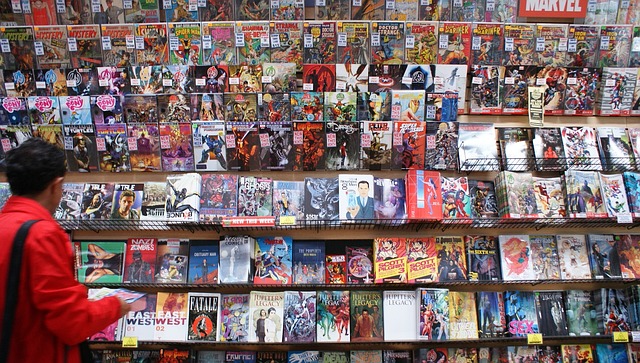Doodle fiction uses simple drawings for storytelling, while graphic novels blend intricate art and text for complex narratives.
TL;DR Doodle fiction Vs. Graphic novels
Doodle fiction is a form of narrative where the story is conveyed through hand-drawn illustrations and minimal text. It embraces imperfections and raw creativity, often capturing the essence of spontaneity and personal expression.
Graphic novels utilize sequential art to tell complex narratives. They typically feature professionally rendered artwork with detailed illustrations that enhance the storytelling experience.
What is doodle fiction?

Doodle fiction is a form of storytelling that combines illustrations and written narratives in a whimsical and playful manner. It brings together the creativity of drawing with the power of words to create unique and imaginative worlds.
Unlike traditional novels or comics, doodle fiction often features hand-drawn illustrations that may appear spontaneous or rough around the edges.
One of the defining characteristics of doodle fiction is its emphasis on individuality and personal expression. Doodlers have the freedom to let their imaginations run wild, creating quirky characters, fantastical settings, and unconventional storylines.
This genre celebrates imperfections and embraces the idea that art doesn’t have to be polished or perfect to be meaningful.
What is a graphic novel?

A graphic novel is a medium that combines the visual elements of art with the narrative storytelling of literature. Unlike traditional novels, which rely solely on written words to convey a story, graphic novels incorporate illustrations and sequential panels to bring the story to life.
In a graphic novel, you’ll find a wide range of artistic styles and techniques, from realistic drawings to vibrant colors and bold lines. These visuals play an essential role in capturing the mood, setting, and emotions of the characters within the story.
Doodle fiction Vs. Graphic novels – Key differences
| Aspect | Doodle Fiction | Graphic Novels |
|---|---|---|
| Art Style | Simple, often basic drawings | Intricate and detailed art |
| Narrative Depth | Typically lighter, simpler stories | Can encompass complex, multi-layered plots |
| Text Usage | Minimal text, visuals convey the story | Balances art and text for storytelling |
| Artistic Detail | Focuses on simple and spontaneous art | Emphasizes detailed illustrations |
| Target Audience | Often appeals to younger or casual readers | Appeals to a wide range of age groups |
| Story Complexity | Generally straightforward narratives | Can involve intricate subplots and themes |
| Format | May be shorter, standalone creations | Typically longer, spanning multiple pages |
| Literary Value | Often seen as light entertainment | Can be recognized as serious literature |
| Examples | Webcomics, quick sketches, casual stories | Novels like "Maus," "Persepolis," "Watchmen" |
What are the 3 main types of graphic novels?
- Fictional Graphic Novels: These graphic novels tell fictional stories, often with complex characters and intricate plotlines. They can encompass various genres such as fantasy, science fiction, romance, mystery, and more.
- Non-Fiction Graphic Novels: Non-fiction graphic novels convey real-life events, historical accounts, biographies, and other factual subjects through a combination of art and text. They can educate and provide insights into various topics.
- Hybrid Graphic Novels: These graphic novels blend different genres and elements, incorporating a mix of fiction and non-fiction, visuals and text, or even different artistic styles. They may incorporate autobiographical elements, personal reflections, or experimental storytelling techniques.
Types of doodle fiction
- Slice of Life Doodles: Everyday life scenarios depicted through simple doodles, often highlighting relatable or humorous moments.
- Whimsical Doodles: Surreal or fantastical stories with whimsical doodle-style illustrations, combining imagination with casual artwork.
- Comic Strip Doodles: Short, sequential stories told through doodle-like comic strips, usually featuring recurring characters or themes.
- Interactive Doodles: Stories that encourage reader interaction, where readers can complete or embellish doodles as they read.
- Diary or Journal Doodles: Personal anecdotes or fictional journal entries presented with doodles, creating an intimate storytelling experience.
Image Credits
Featured Image By – Emilie Farris from Pixabay
Image 1 By – Howard Pyle, Public domain, via Wikimedia Commons
Image 2 By – Kiia KallioSami Saramaki, CC BY-SA 4.0 , via Wikimedia Commons








